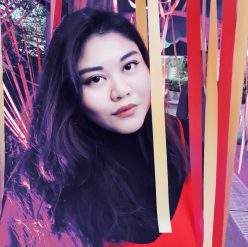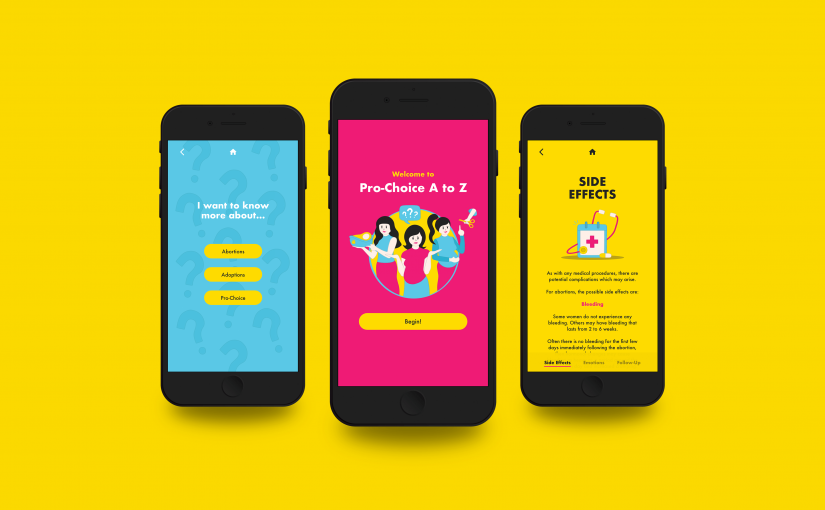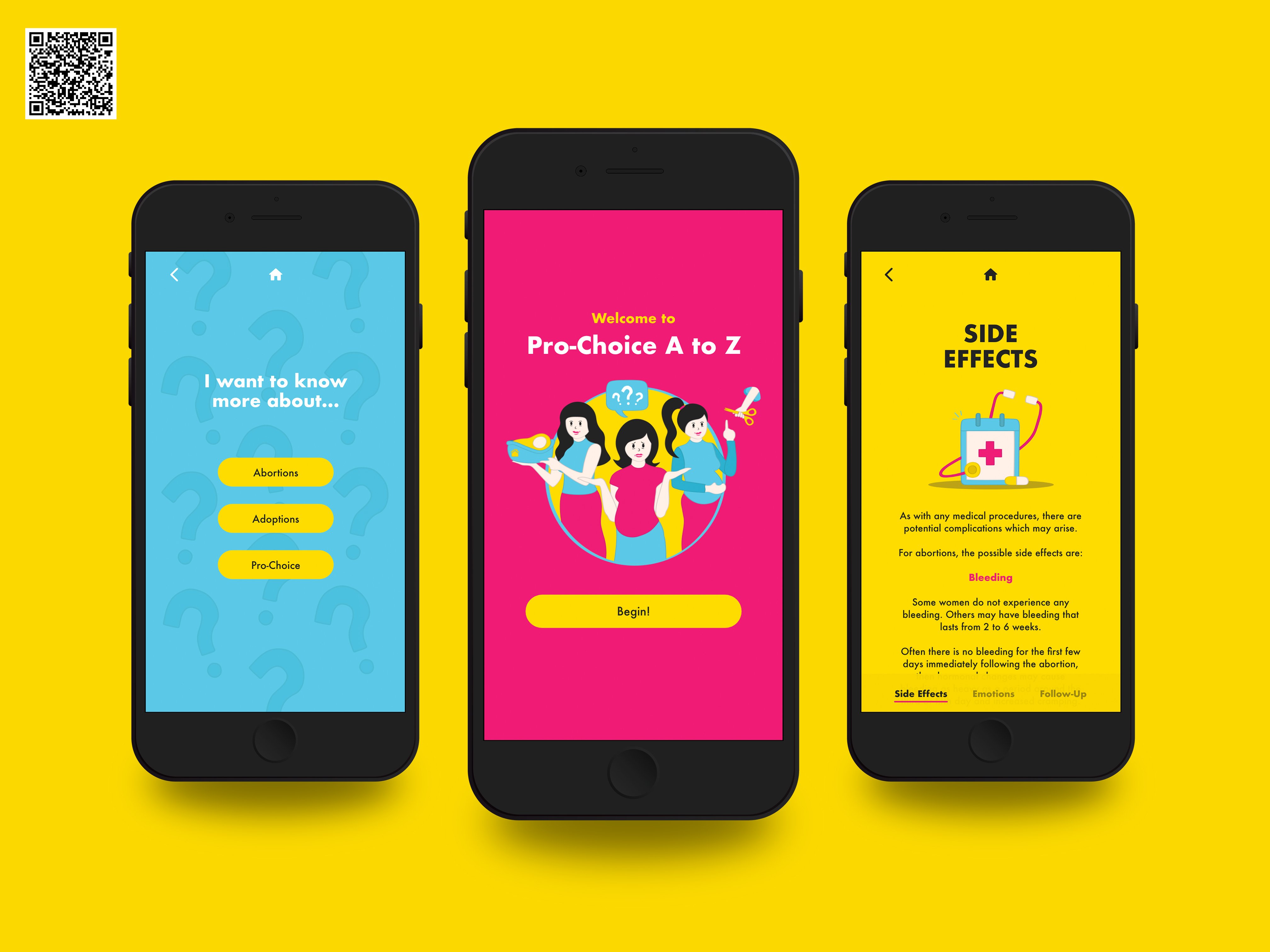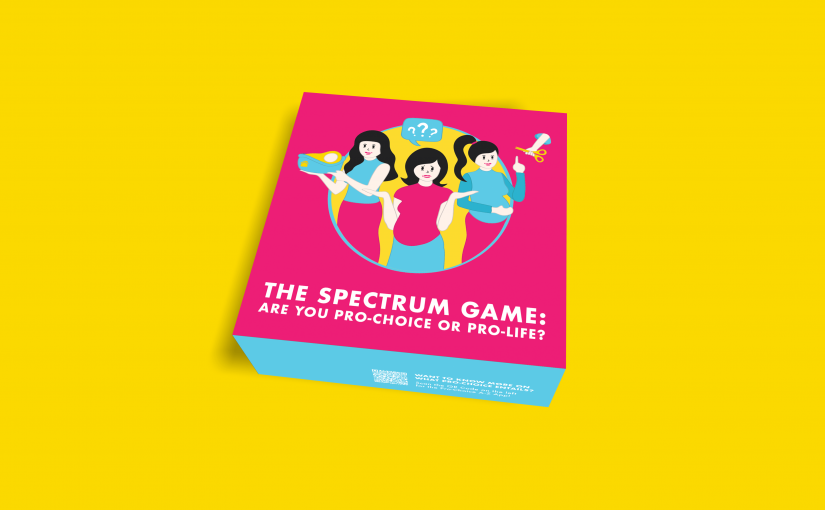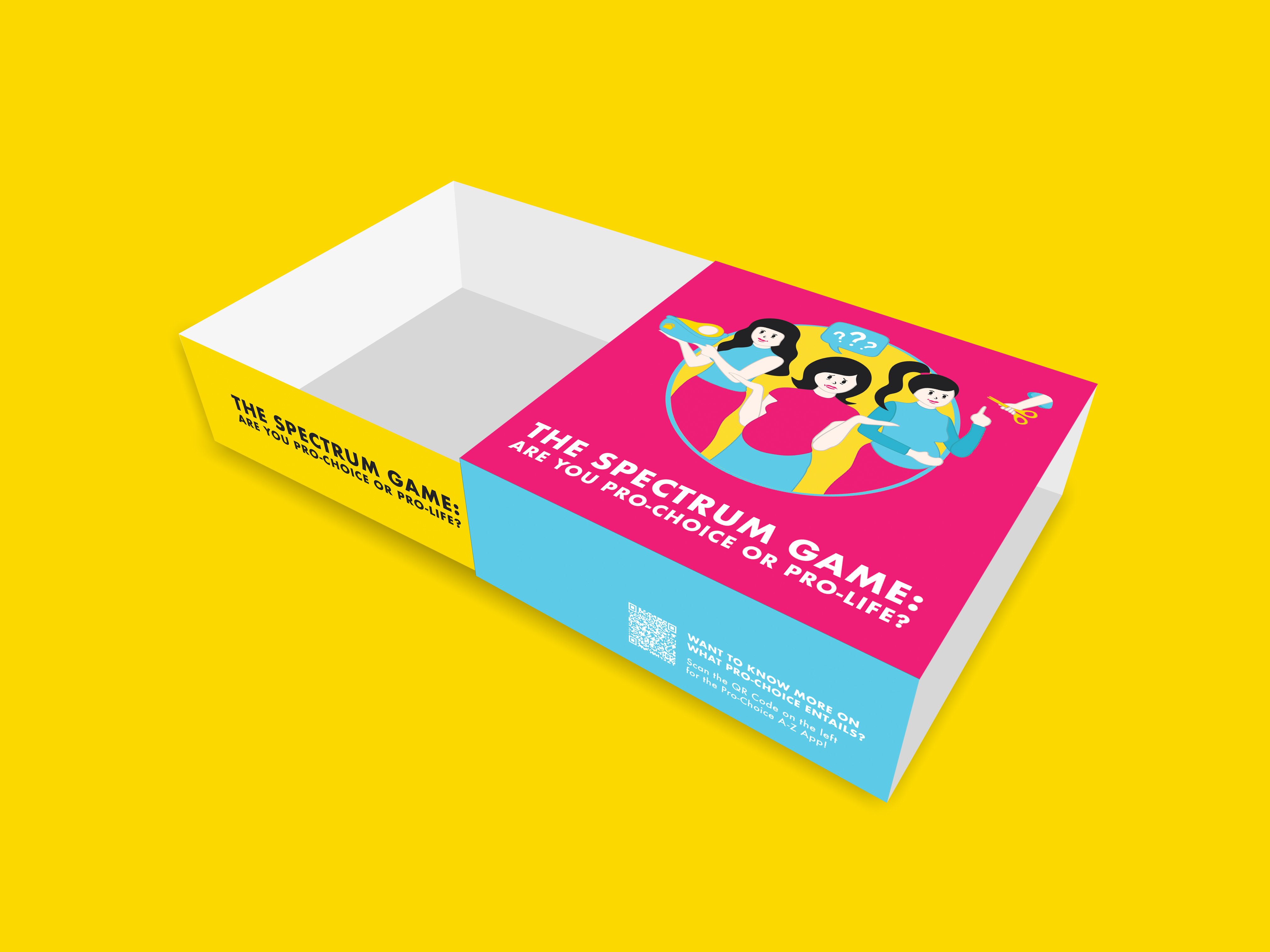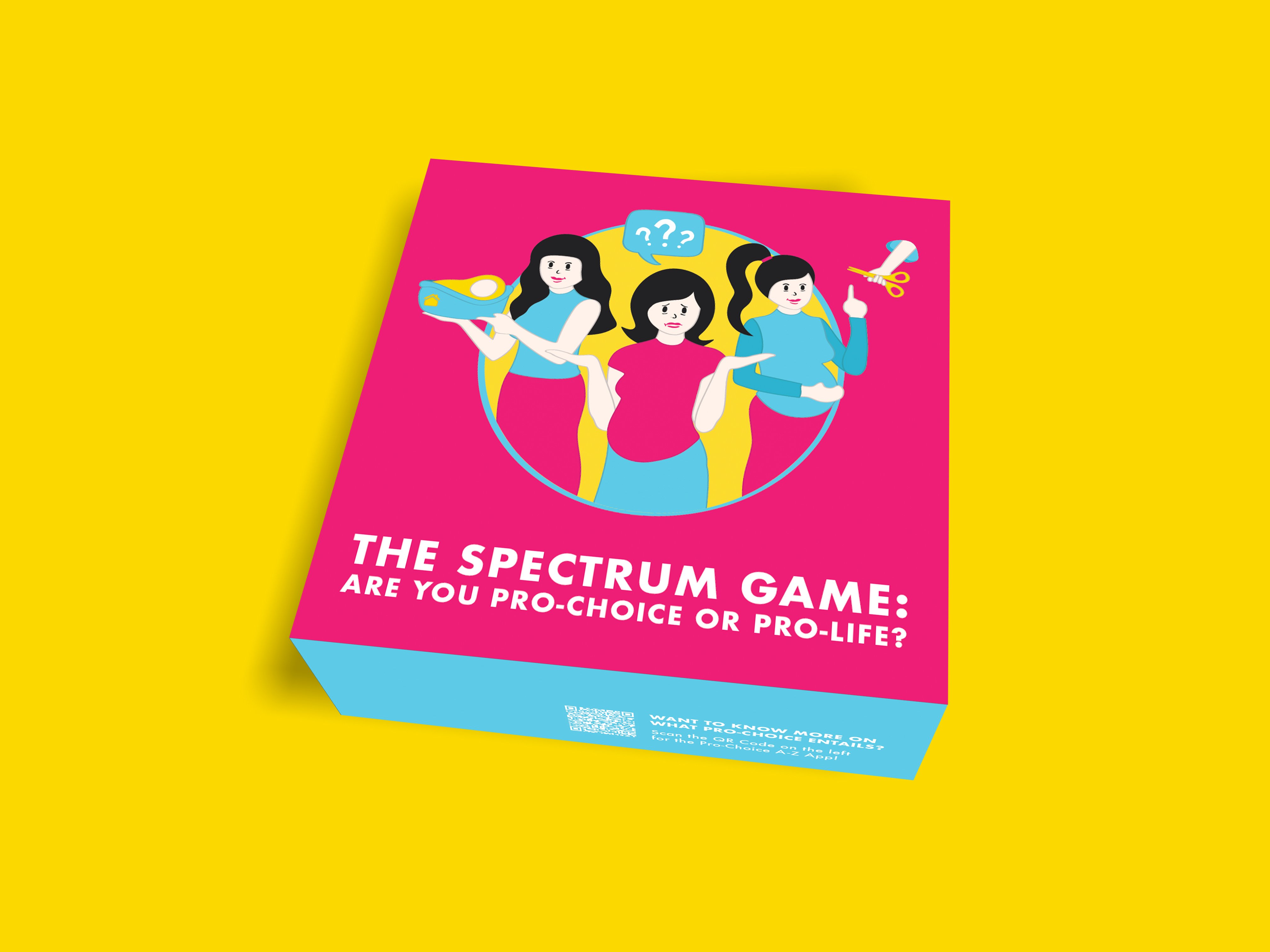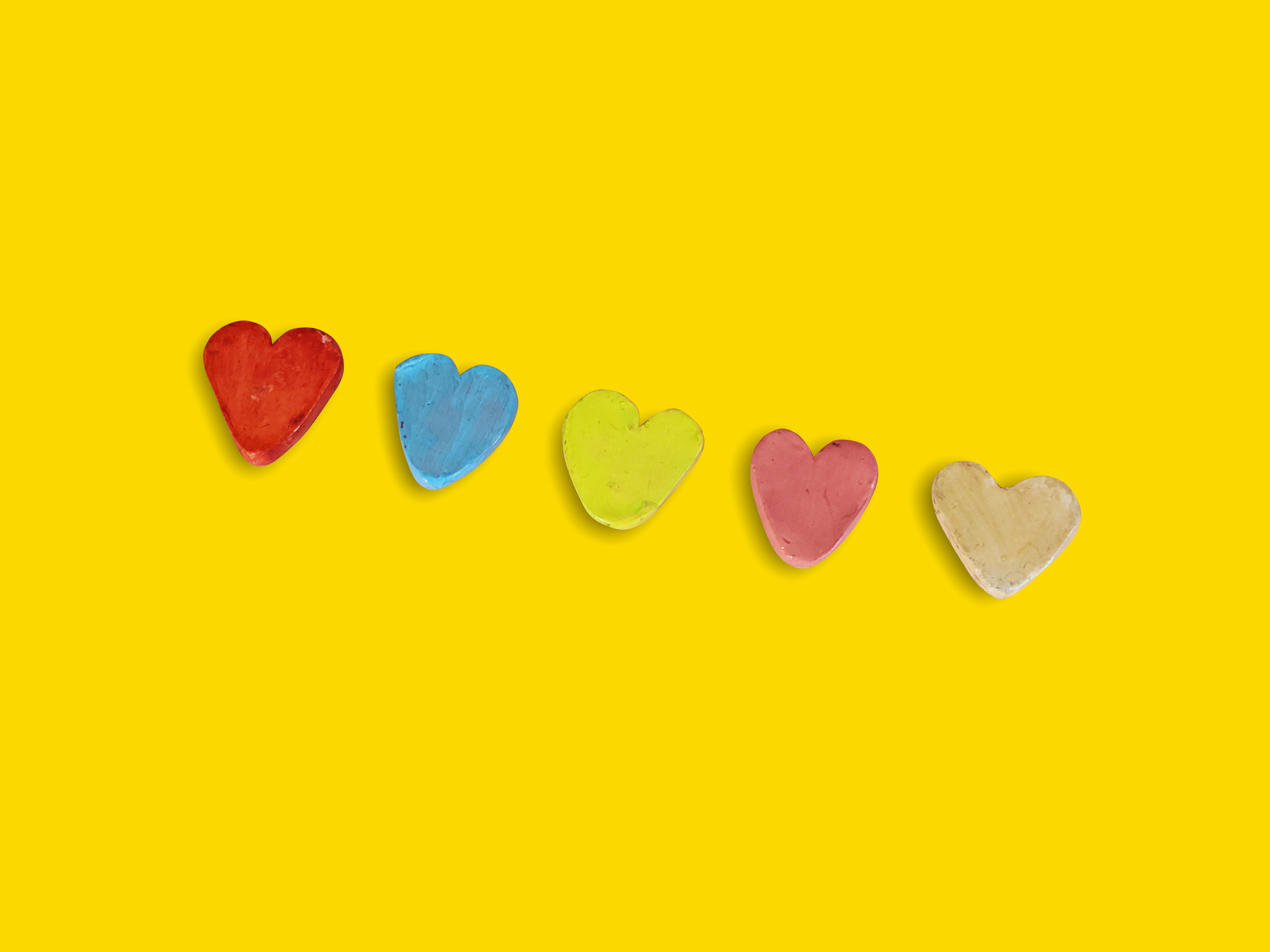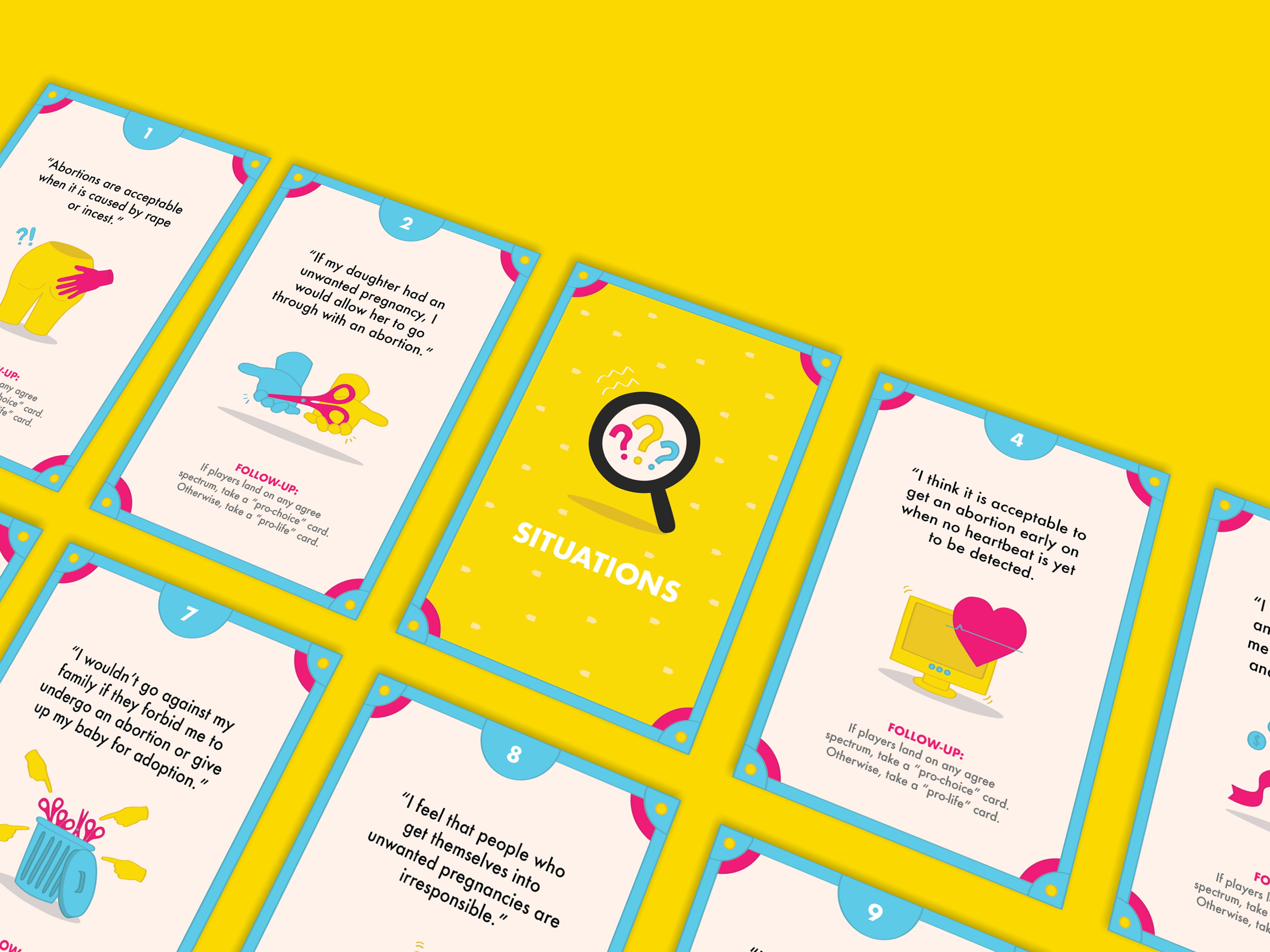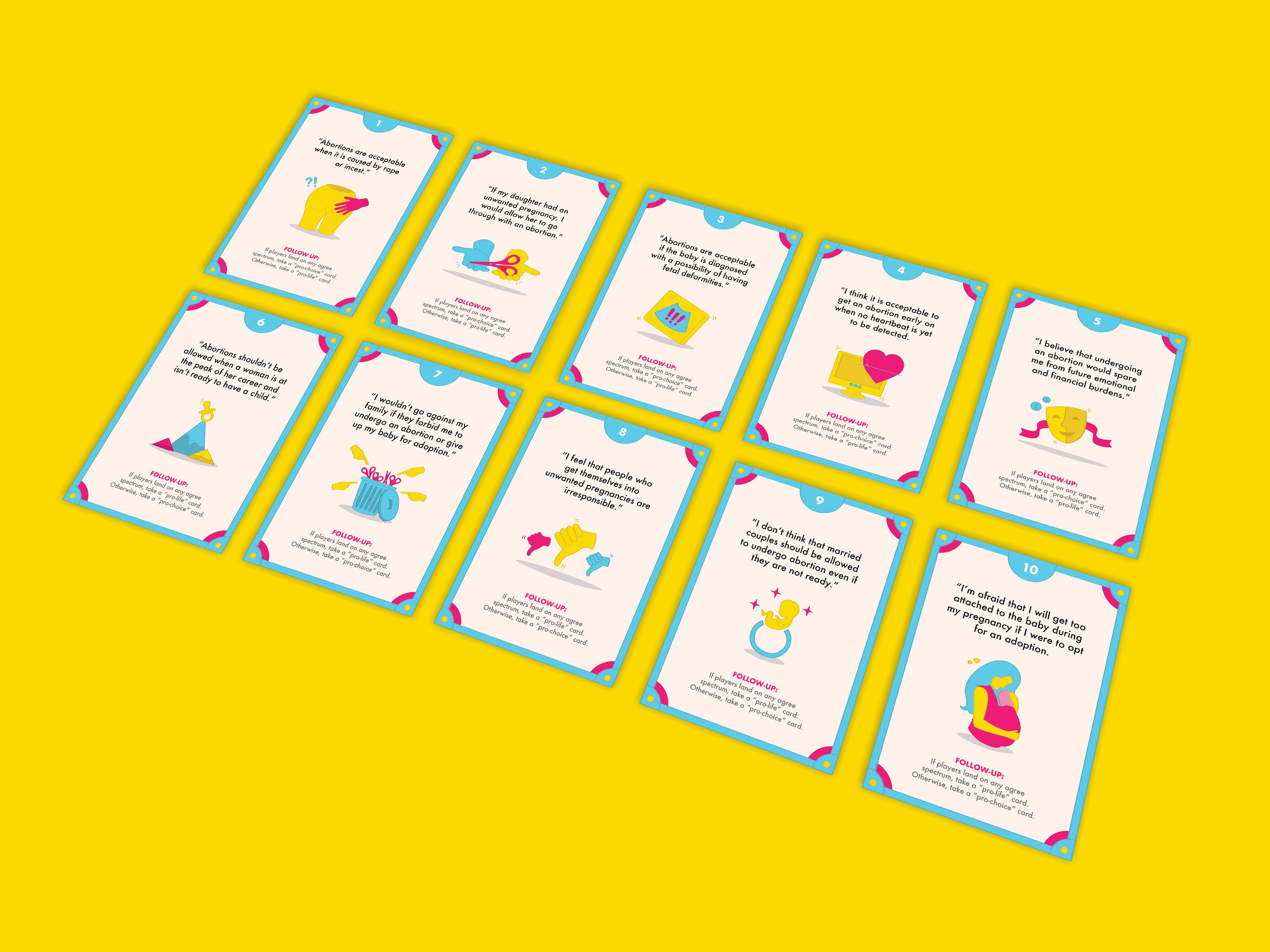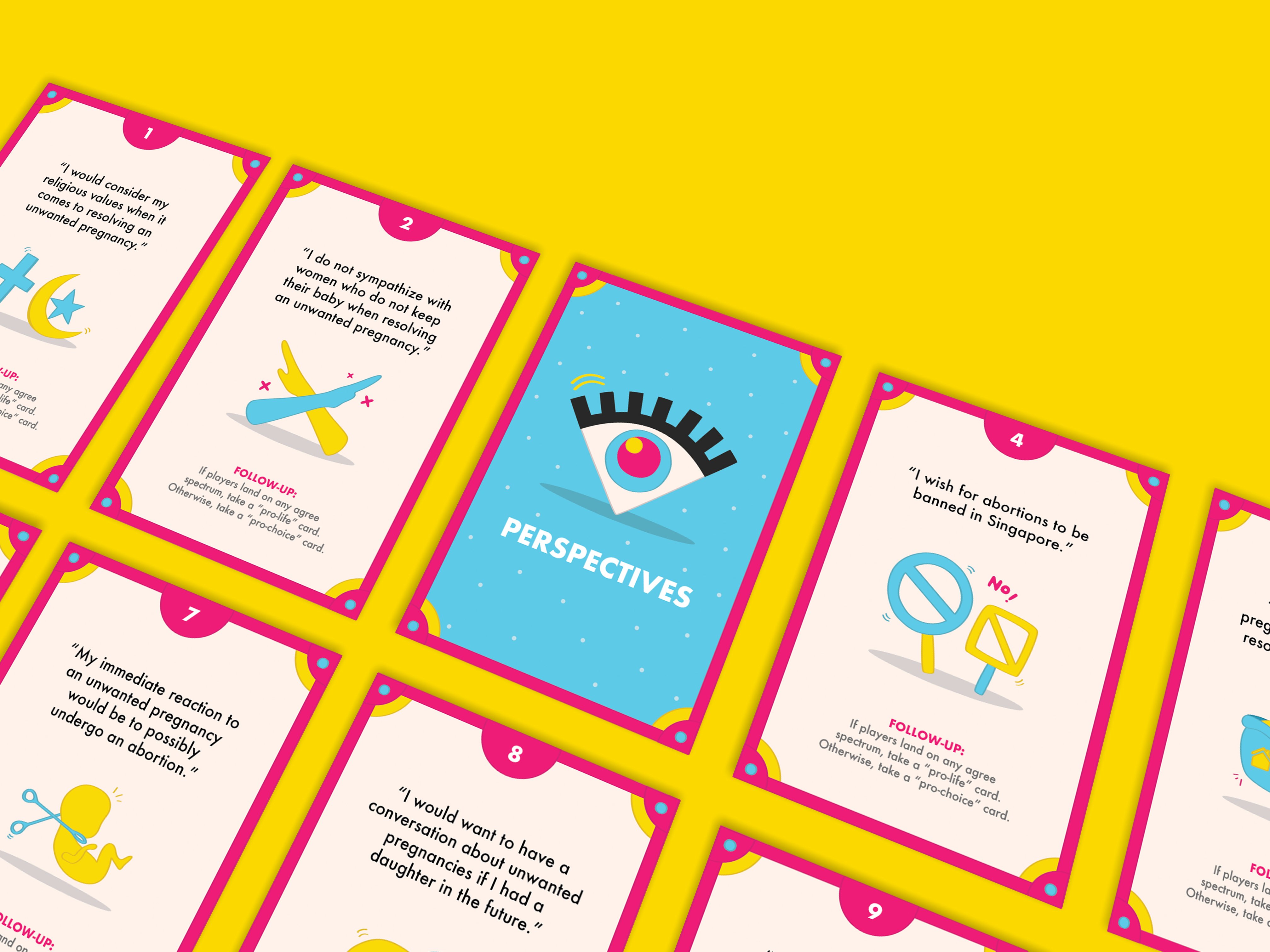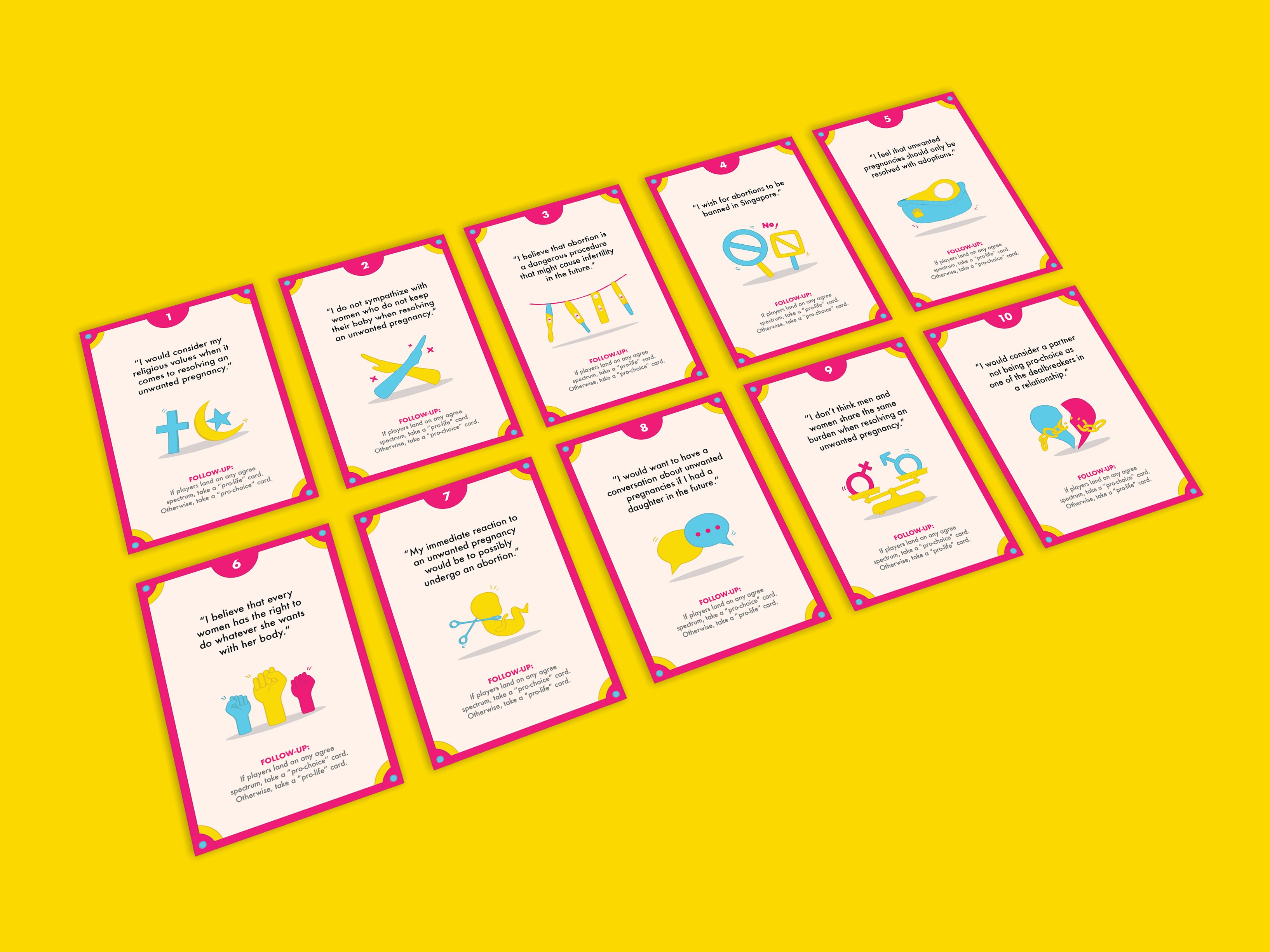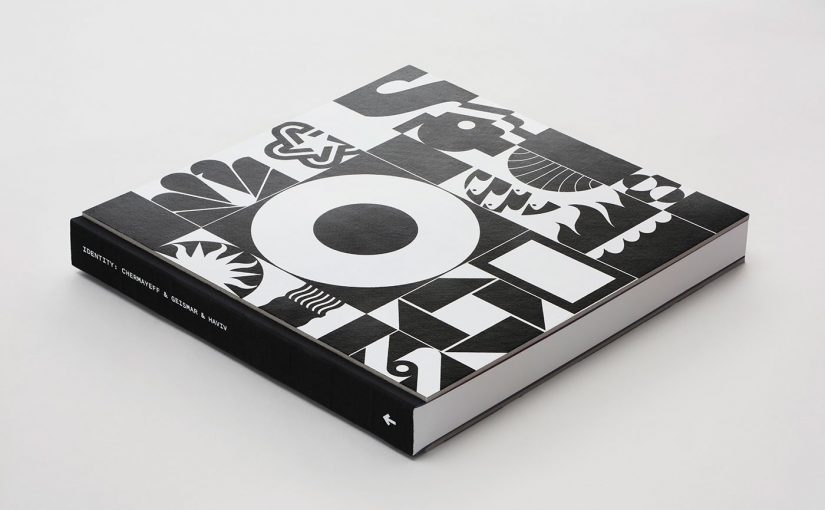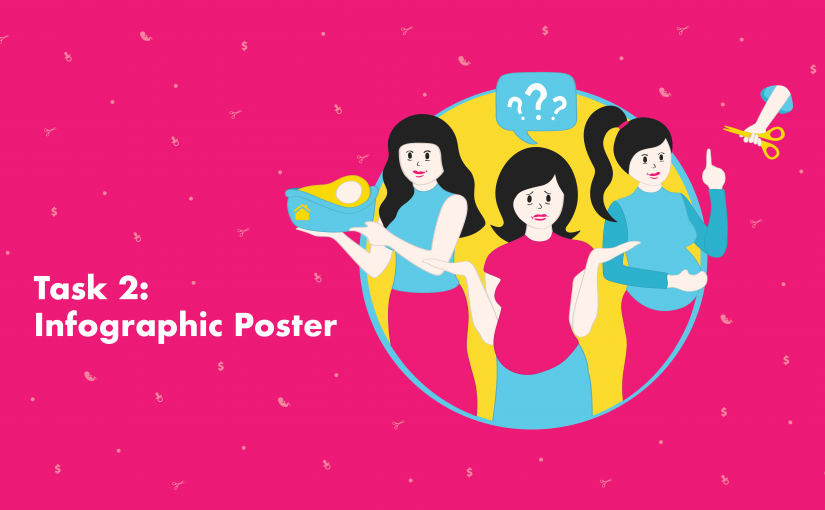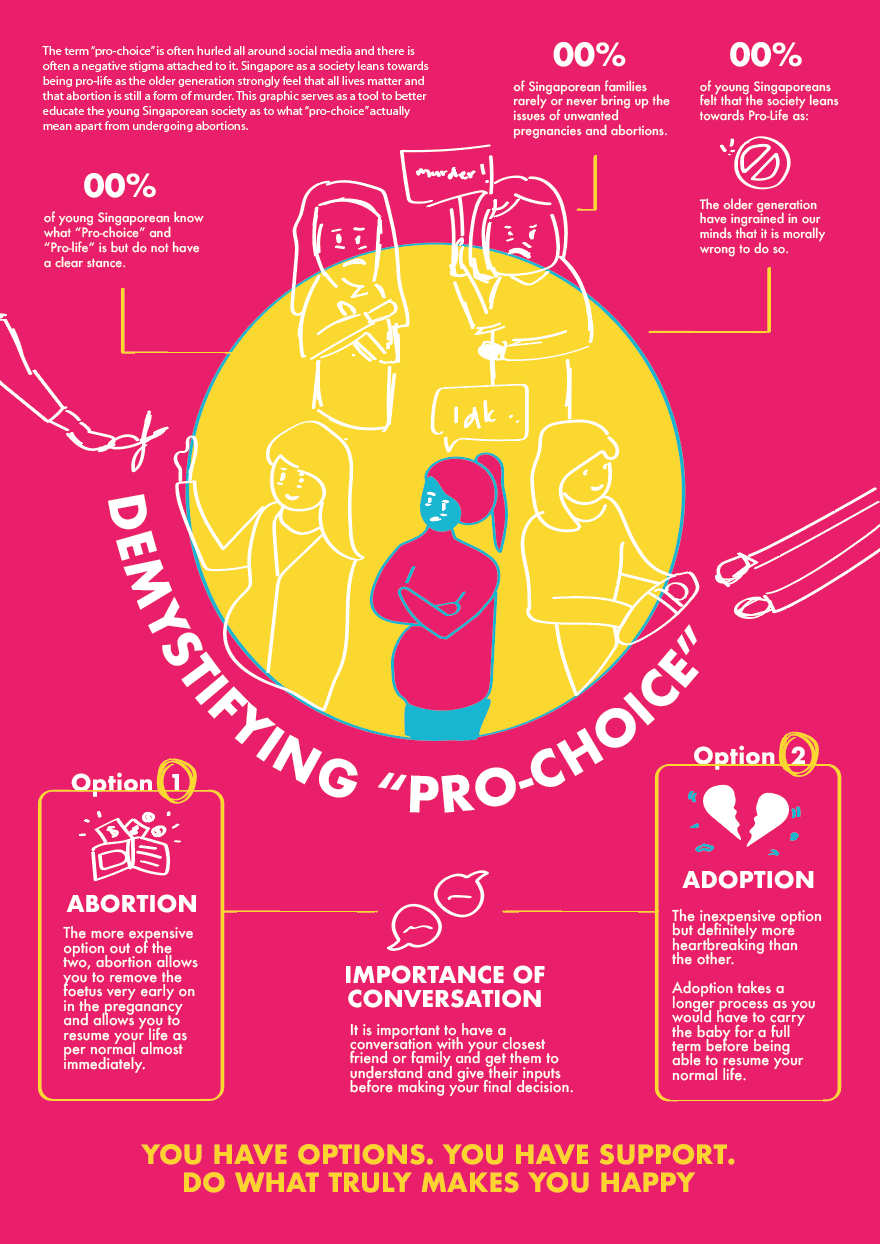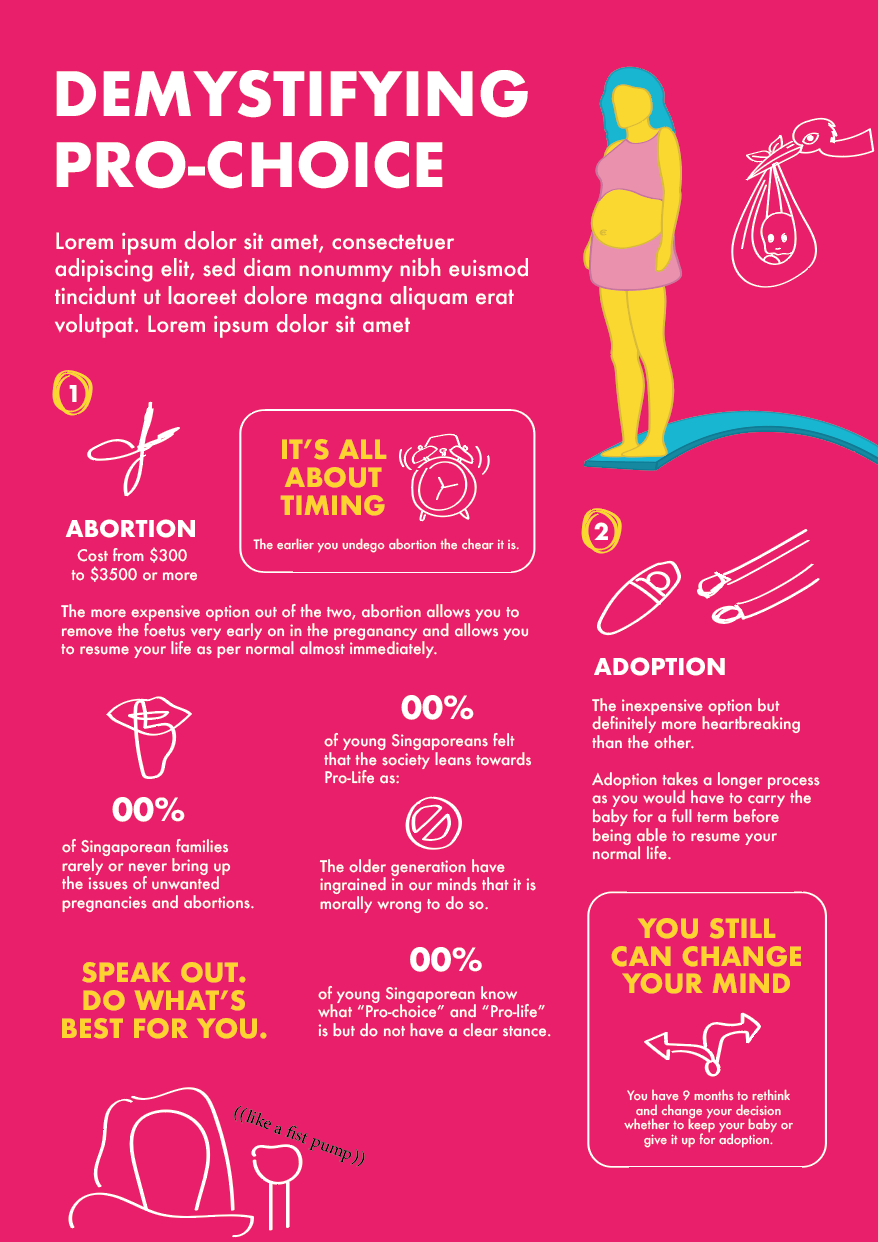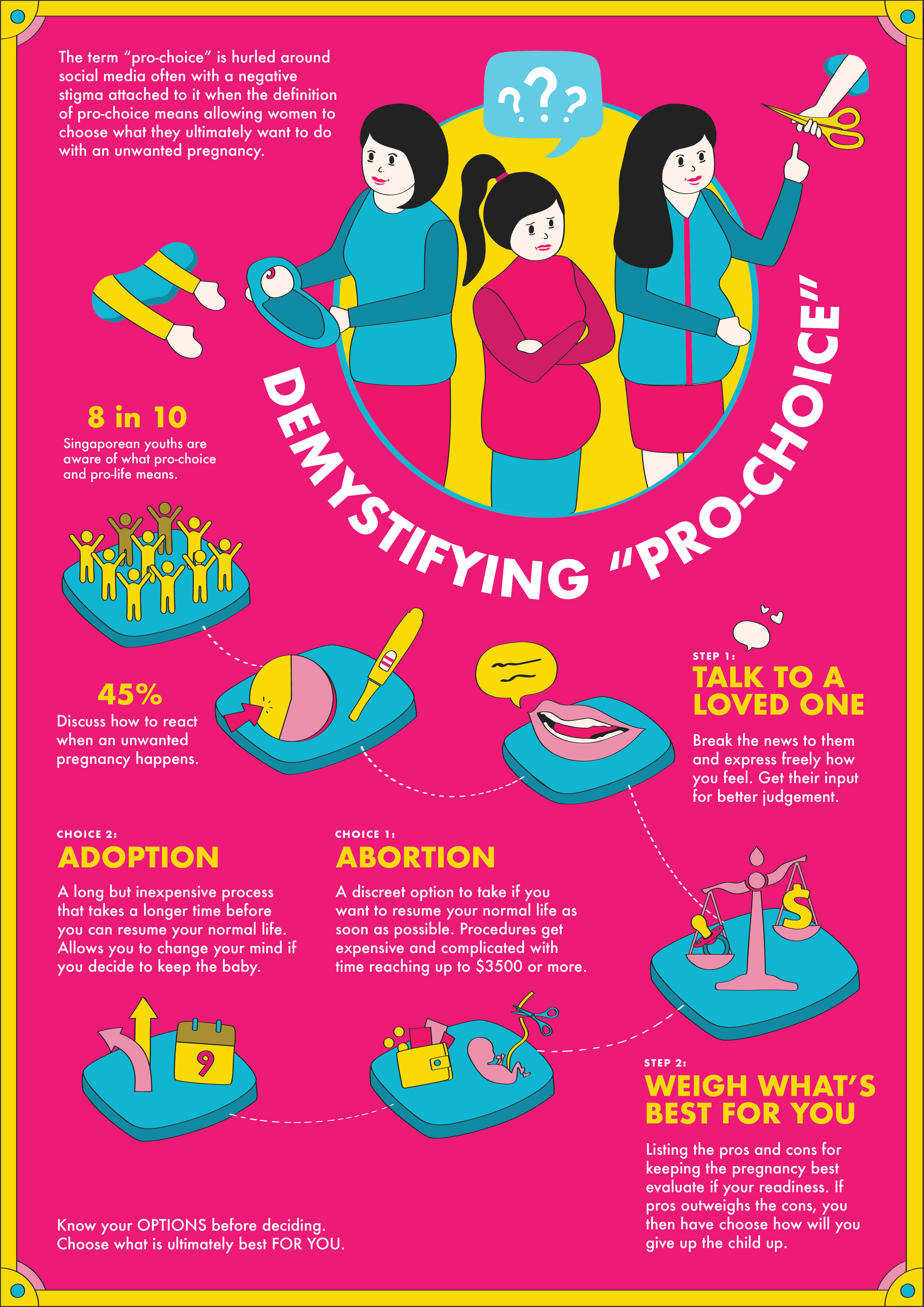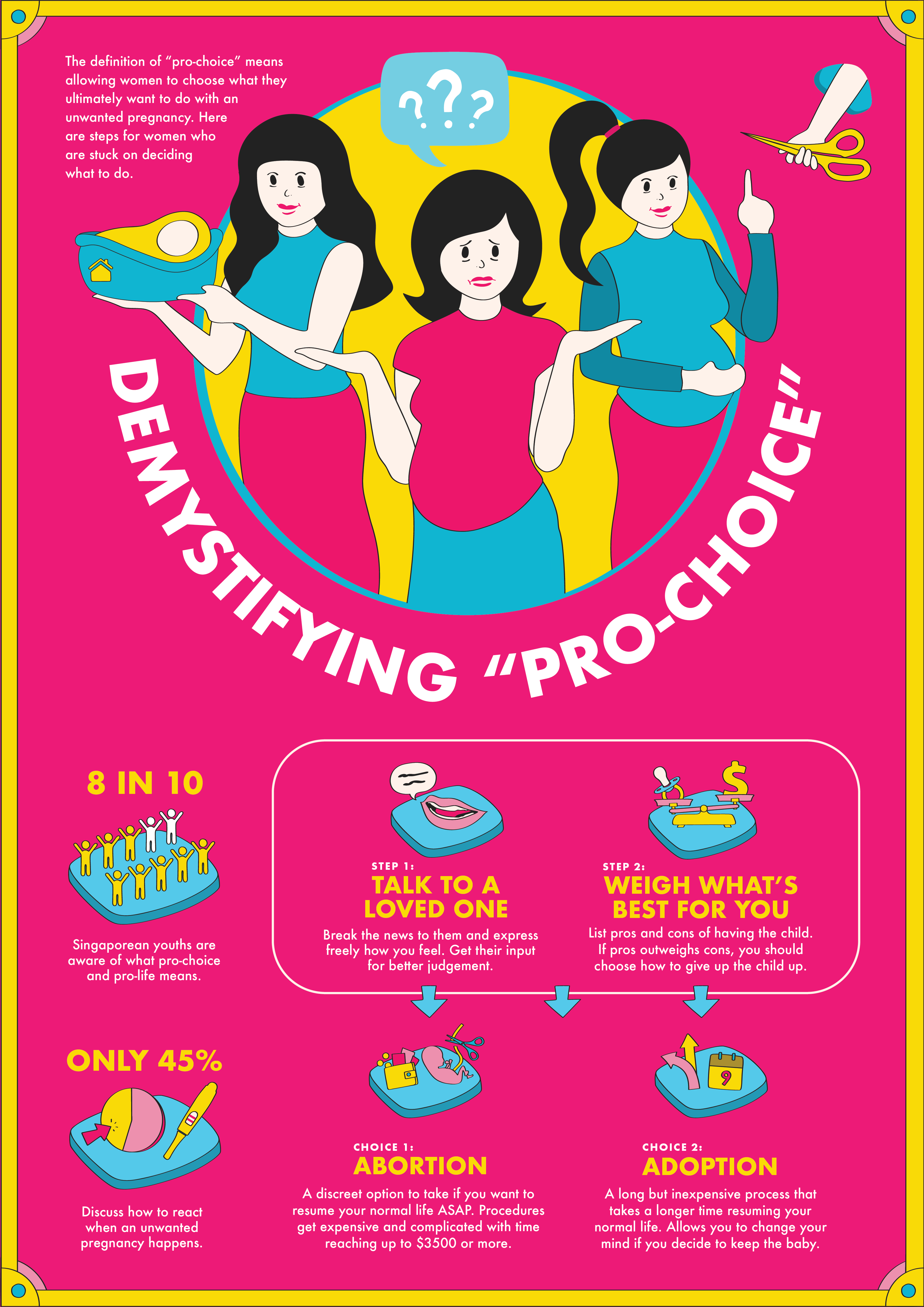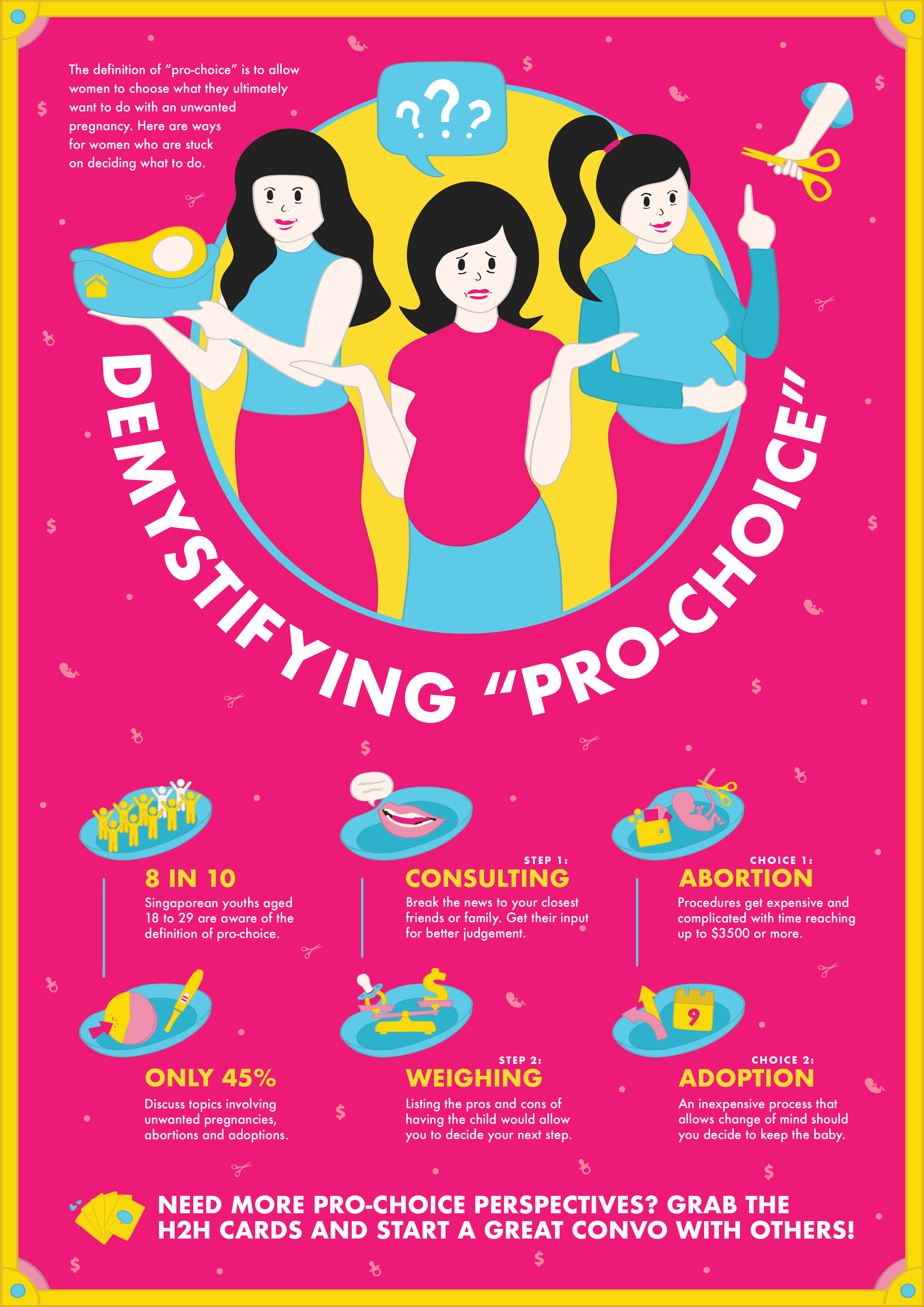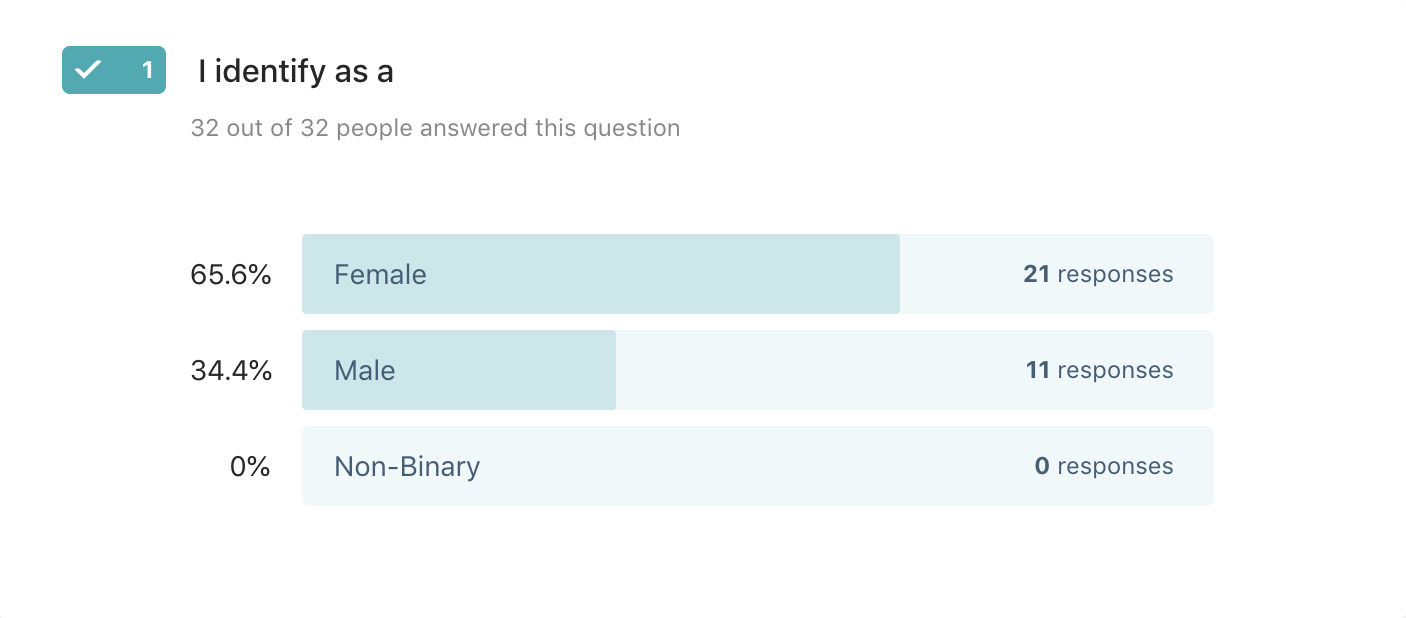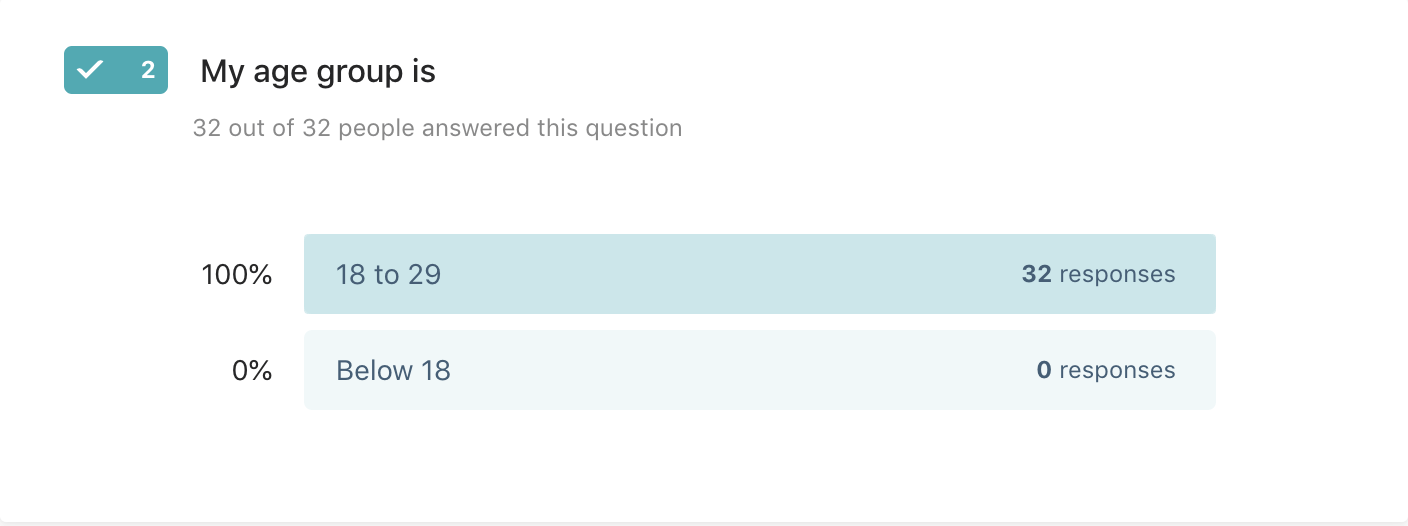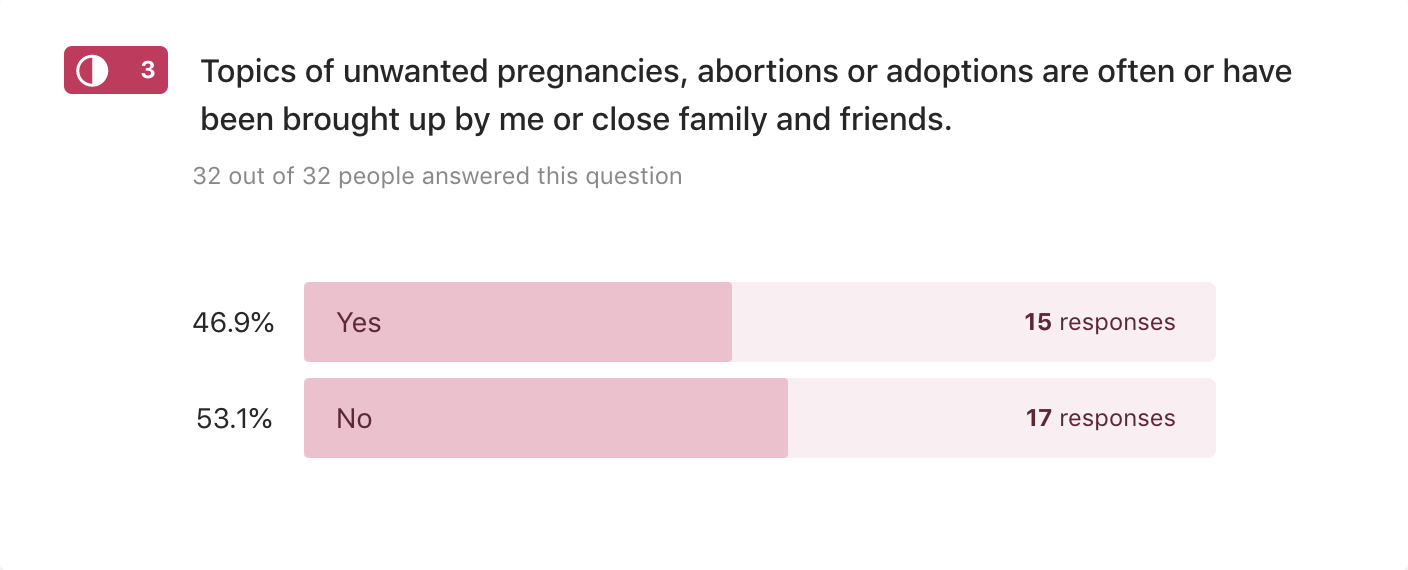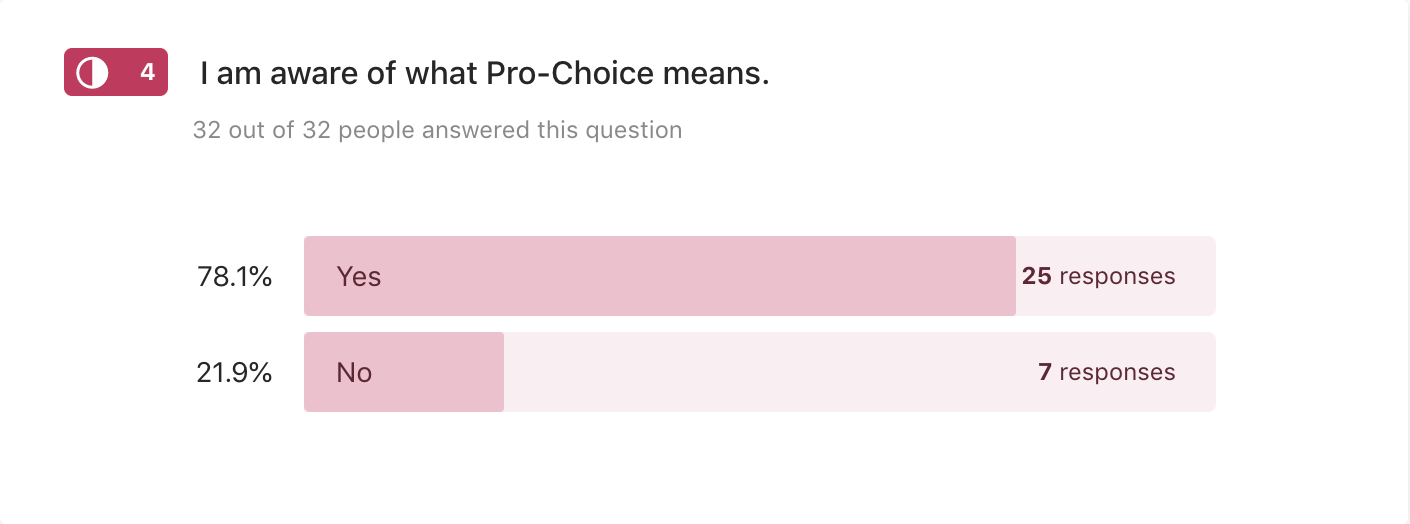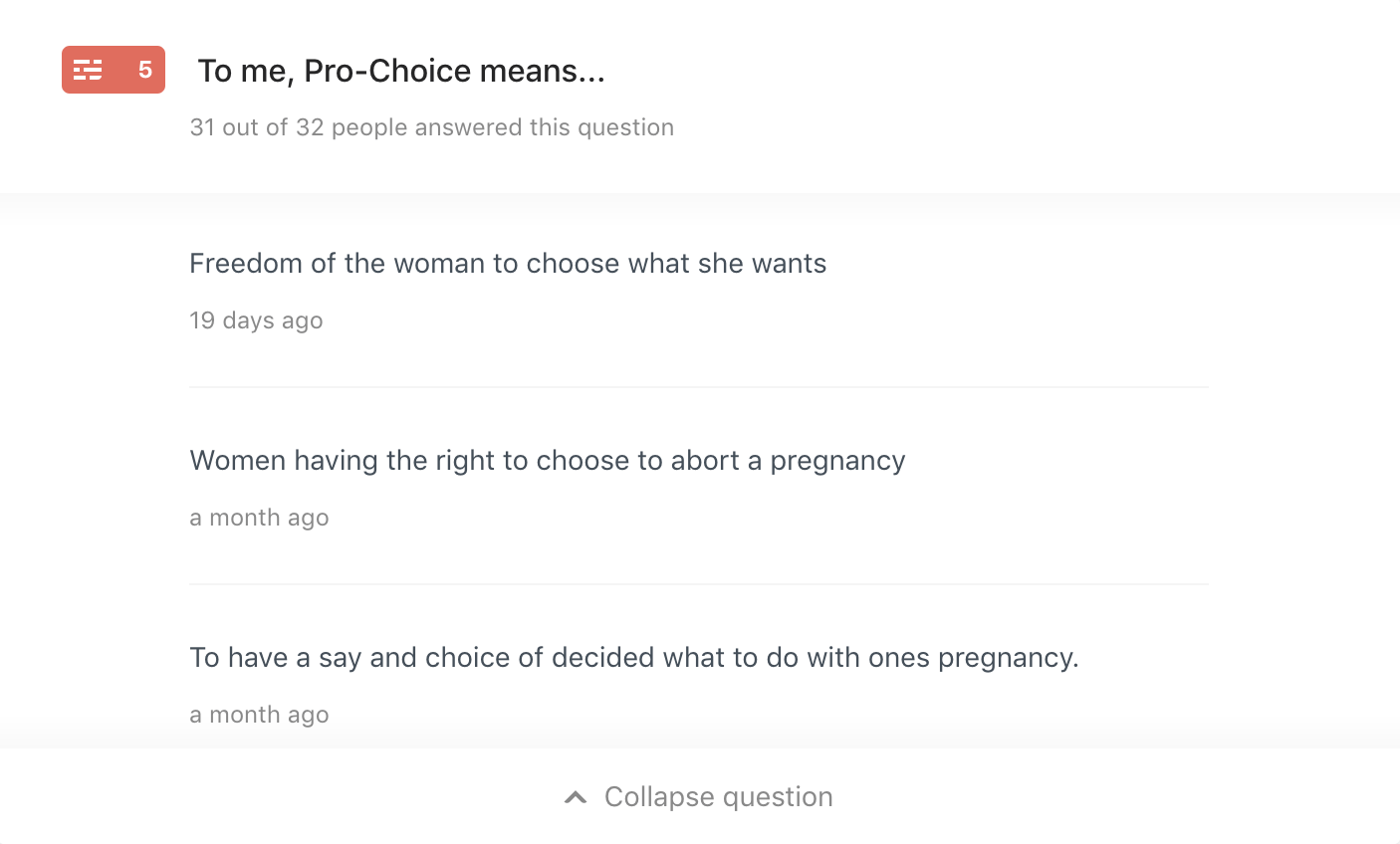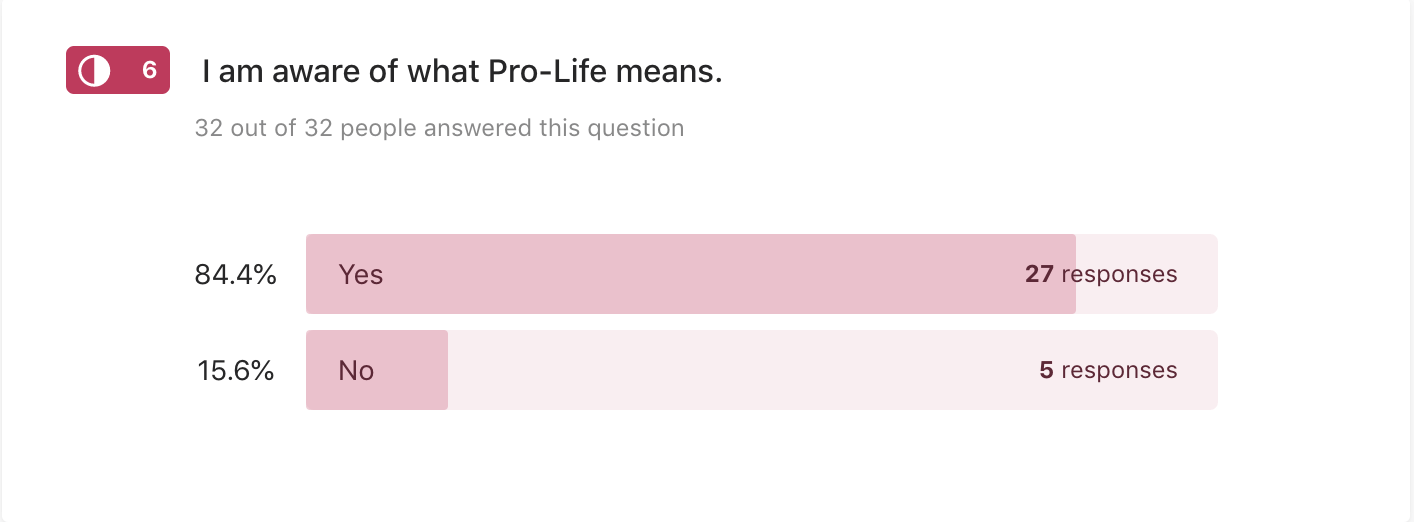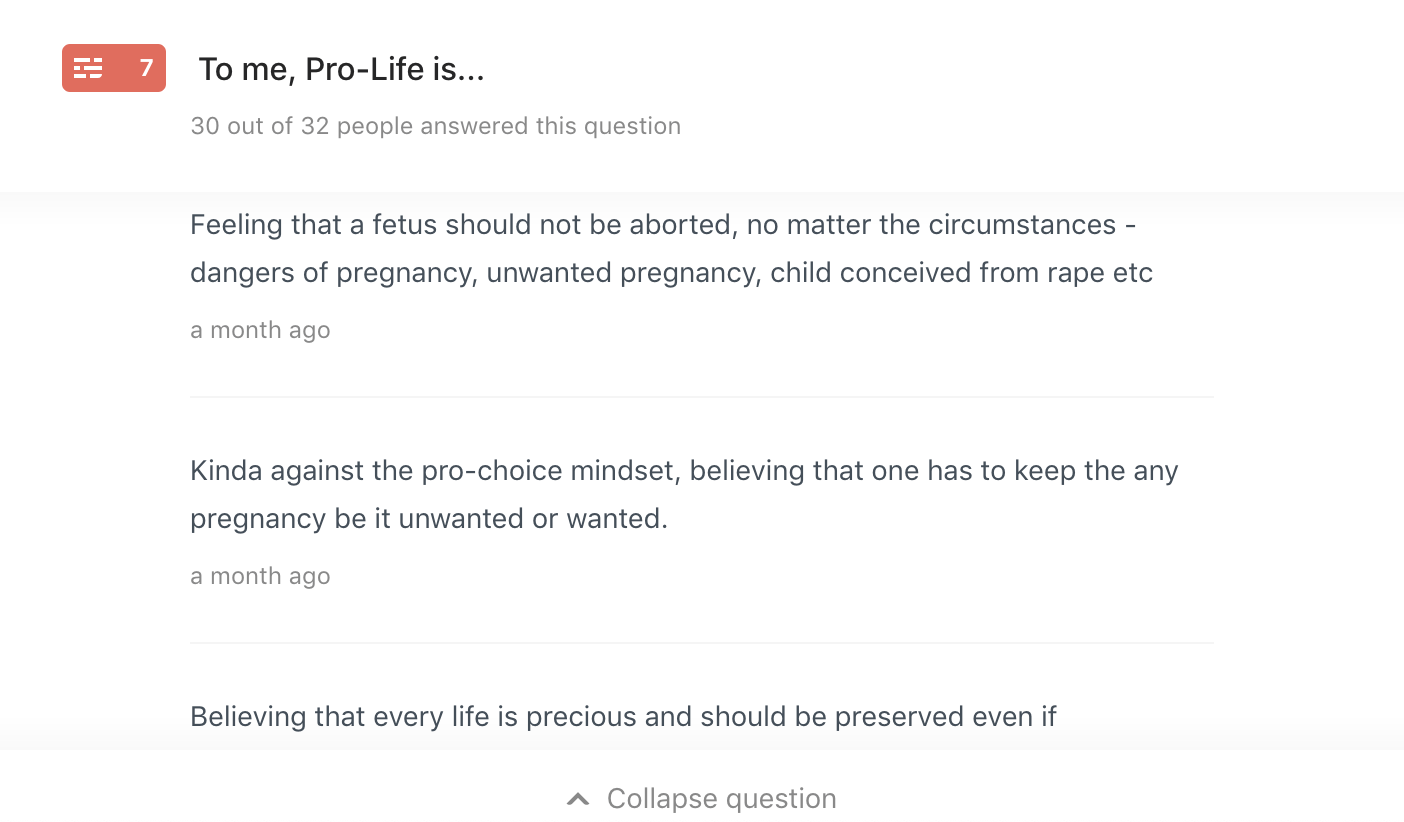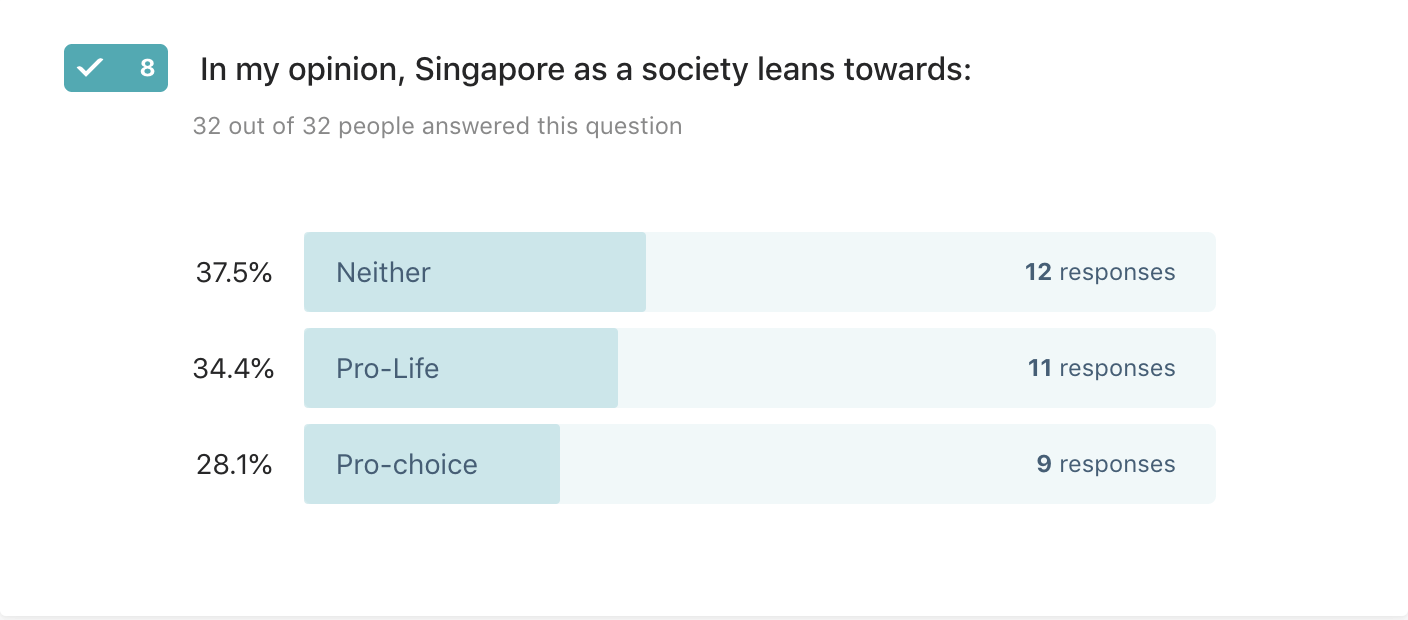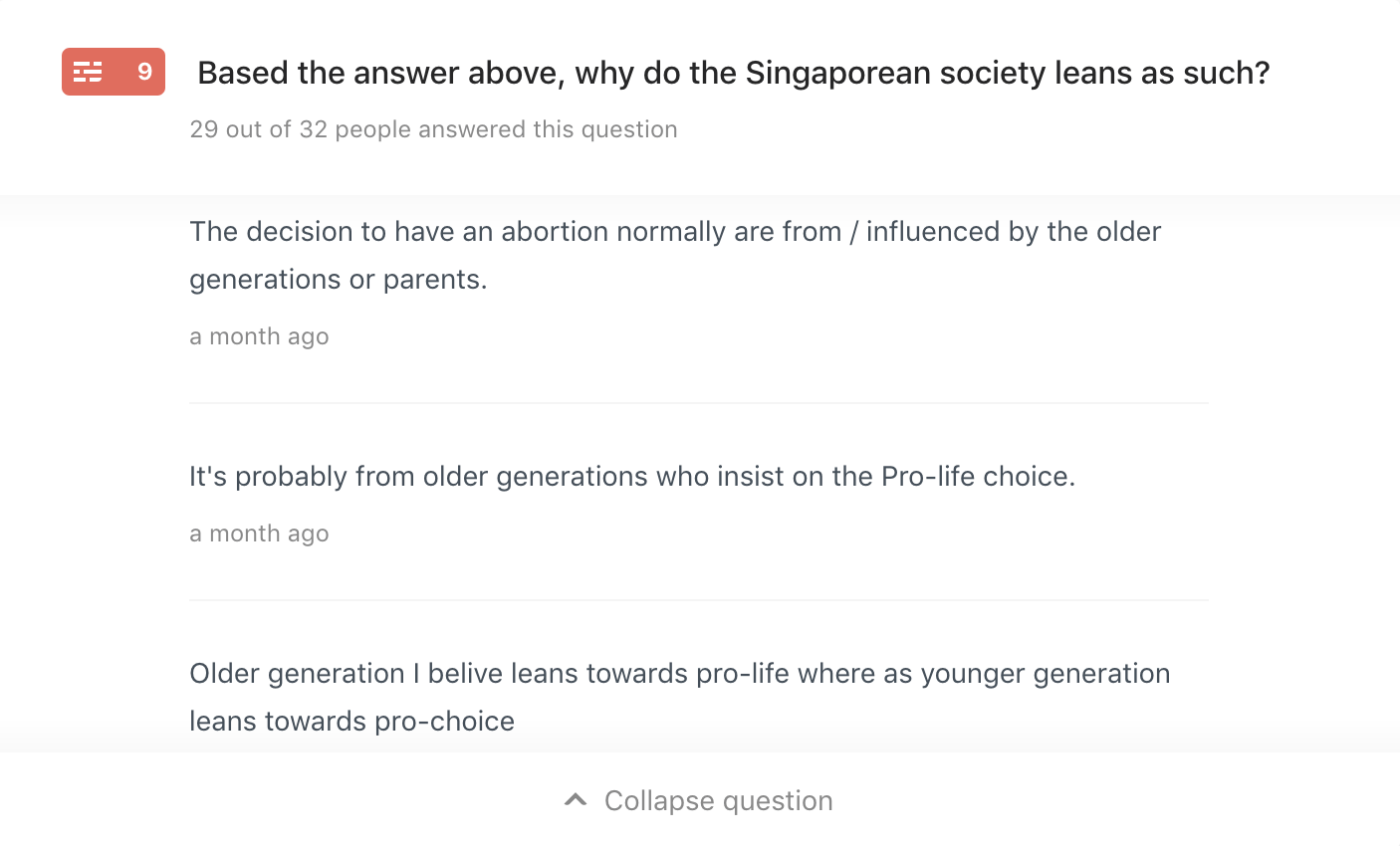Moving forward from the infographic poster, I decided to keep the colours, illustrations and basically the whole look and feel to incorporate it in both of my final deliverables.
DESIGN OUTCOME 1
Pro-Choice Game: Are You Pro-Choice or Pro-life?
Starting this deliverable out, I spent some time thinking and collating information from both the survey responses as well as videos, websites, forums and articles online that could aid me in the content of my game. My aim of this game would be to spark conversations among young women, encouraging them to speak up and/or ask questions that they are shy to ask with all things revolving around abortions, adoptions and unwanted pregnancies.
Initially, I just wanted to come out with prompt cards that will be drawn by each players and getting them to talk about what they feel but after consultations and revisiting the cards and its concept, I felt that the prompt cards doesn’t fully engage the players as much as I wanted it to be.
As such, I went to think of stronger game objectives that allow players to come to a conclusion once they are done with the game thus, the gameplay of the board game allows players to find out if they are pro-choice supporters or if they are pro-life supporters all while allowing conversations to flow throughout the different prompt cards.
Early Sketches:

Gameplay:
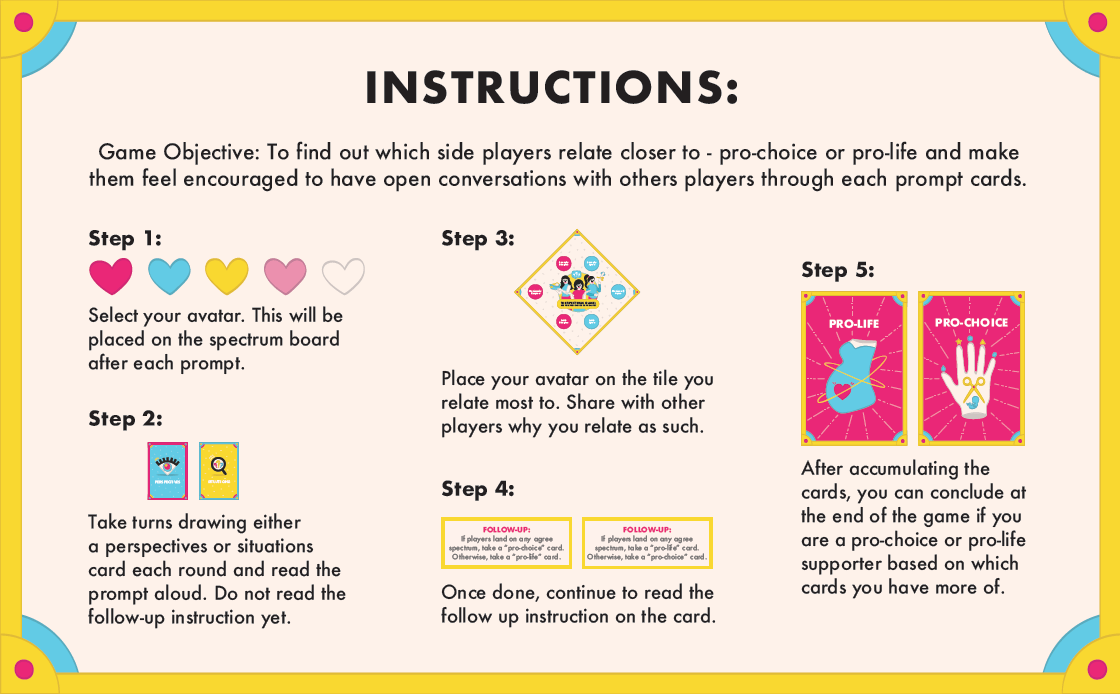
Packaging:
I decided to go with the sliding box as the final packaging as I thought it would be simple yet a little different from the usual open up boxes. The different faces of the box are in pink, blue and yellow respectively so as to really make it interesting and vibrant and look very attractive as a game cover.
Board (+icons):
I have created the board such that it allows for players to place their icons within a spectrum as I felt that it would allow them to better visualise where they stand among the other players and allows for a better conversation starter after each prompt.
Prompt Cards:
I have divided the prompt cards into pro-choice and pro-life cards where 5 cards from each category would have a follow-up of having the players collect either pro-choice or pro-life cards if they were to land on any agree spectrum. After 20 rounds of drawing, players would then be able to determine if they are pro-choice supporters or pro-life supporters.
Token Cards:
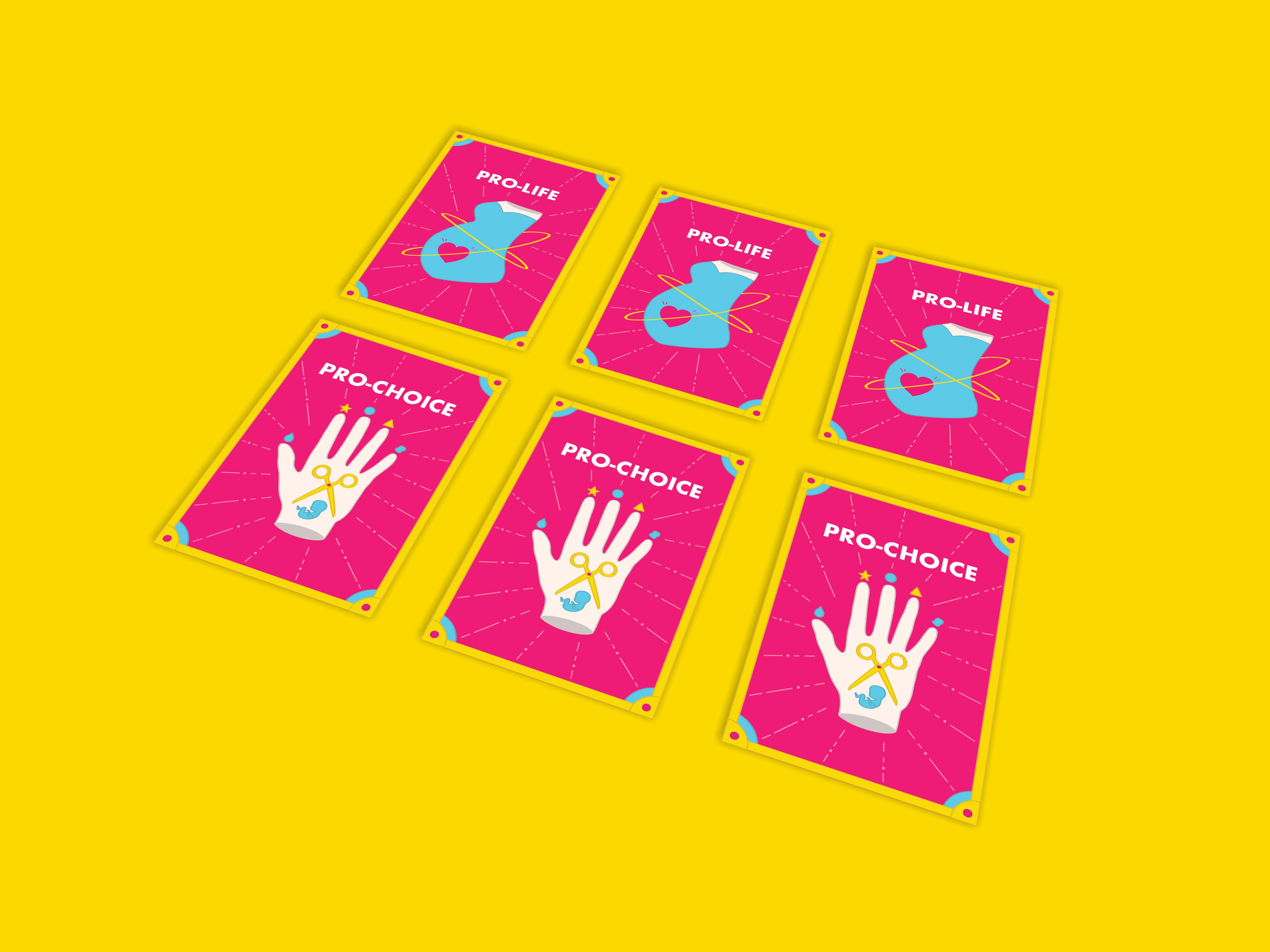
Players are to collect these cards and accumulate them at the end of the game.
Application:
I really hope that this game could be a great conversation starter for young women especially those who have been raised by parents who are not open with discussing topics revolving around unwanted pregnancies. This game could be part of a workshop done by organisations that aid women in unwanted pregnancies or even local Youtube channels that highlight social issues in Singapore where they gather young women of different walks of life to come together to have a genuine conversation and also gaining insight from each other.


